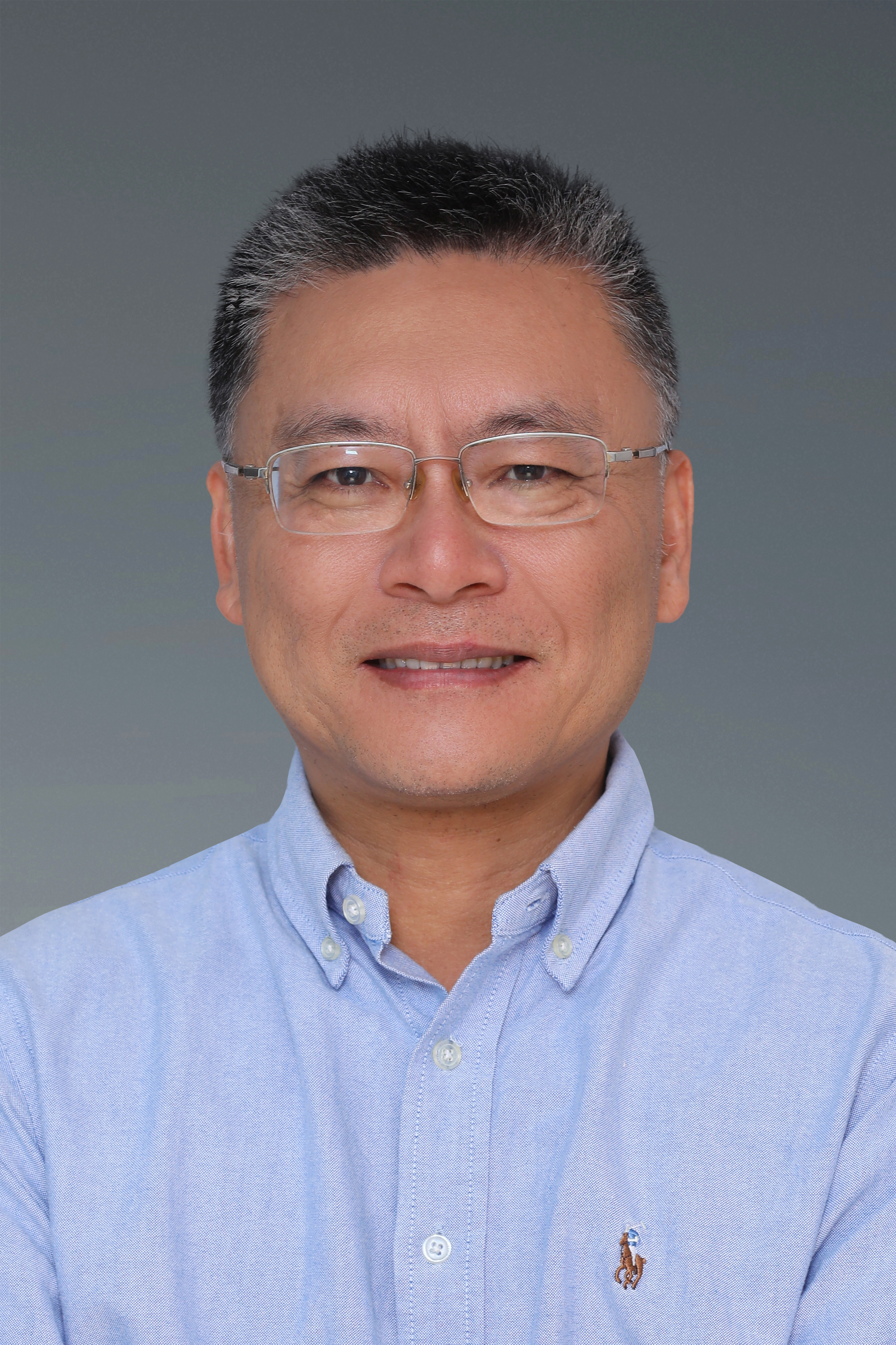

课题组长:林东海/Donghai Lin
教授、博士生导师
厦门大学化学化工学院化学生物学系,厦门大学高场核磁中心
电话:0592-2186078
邮箱:dhlin@xmu.edu.cn
Professor and Doctoral Supervisor
Department of Chemical Biology, College of Chemistry and Chemical Engineering,
Xiamen University, High Field NMR Center of Xiamen University
Tel: 0592-2186078
E-mail: dhlin@xmu.edu.cn
一.教育背景和科研经历 (Educational Background and Research Experience)
林东海教授于1984年和1989年在厦门大学物理系获得物理学学士和硕士学位;1993于厦门大学化学系获得物理化学博士学位;1993年-1995年于中国科学院武汉物理研究所从事核磁共振专业的博士后研究工作;1995年被聘为厦门大学化学系副教授,组建核磁共振实验室,其间任日本科学振兴会JSPS特别研究员,于京都大学化学系从事生物物理研究;1998年-2001年于美国City of Hope National Medical Center生物核磁共振实验室从事结构生物学研究工作;2001年-2003年于香港科技大学生物核磁共振中心从事核磁共振方法学研究;2002年10月入选中国科学院“百人计划”;2003年6月回国,到上海药物研究所工作,任课题组长、研究员、博士生导师,2009年入选“上海市优秀学科带头人(A类)”,并被厦门大学化学化工学院化学生物学系聘为“闽江学者”特聘教授, 博士生导师,作为负责人组建并领导厦门大学高场核磁共振中心, 2011年入选“福建省百人计划(A类)”,2023年被认定为“厦门市高层次人才计划(B类)”。他曾荣获2006年度中国“王天眷”波谱学奖、2024年度厦门大学“曹德旺奖教金(科研类)”等奖项。
Prof. Donghai Lin received his B.S. (1984) and M.S. (1989) degrees in Physics from the Department of Physics at Xiamen University, and his Ph.D. in Physical Chemistry from the Department of Chemistry, Xiamen University, in 1993. From 1993 to 1995, he conducted postdoctoral research in Nuclear Magnetic Resonance (NMR) at the Wuhan Institute of Physics, Chinese Academy of Sciences (CAS). In 1995, he was appointed Associate Professor in the Department of Chemistry, Xiamen University, where he established the NMR Laboratory. During this period, he was awarded a Special Research Fellowship from the Japan Society for the Promotion of Science (JSPS) and carried out biophysical research at the Department of Chemistry, Kyoto University. From 1998 to 2001, he worked at the City of Hope National Medical Center in the United States on structural biology research, and from 2001 to 2003, he was engaged in NMR methodology development at the Bio-NMR Center of the Hong Kong University of Science and Technology.
Prof. Lin was selected for the “Hundred Talents Program” of CAS in October 2002. In June 2003, he returned to China to join the Shanghai Institute of Materia Medica (SIMM), where he served as a Principal Investigator, Research Professor, and Ph.D. supervisor. In 2009, he was named a “Shanghai Outstanding Academic Leader (Class A)”, and was concurrently appointed “Minjiang Scholar” Distinguished Professor and Ph.D. supervisor at the Department of Chemical Biology, School of Chemistry and Chemical Engineering, Xiamen University, where he led the establishment of the High-Field NMR Center of Xiamen University. He was further selected for the “Hundred Talents Program of Fujian Province (Class A)” in 2011 and recognized as part of the “Xiamen High-Level Talents Program (Category B)” in 2023.
His contributions have been recognized with several prestigious awards, including the Wang Tianjuan Spectroscopy Award (2006) and the Tsao Dewang Scholarship for Research (2024) at Xiamen University.
二.社会兼职
他兼任中国生物物理学会之代谢组学分会、生物核磁共振分会、分子生物物理分会、中国毒理学会之生物毒素毒理分会的理事,以及华南结构生物学论坛主任,为公益性的学术交流平台MEM(医学-运动-代谢研究园地)的创始人和领导者(目前成员~3000人),同时兼任《Health and Metabolism》主编、《Frontiers in Molecular Biosciences》副主编(Section of Metabolomics)、《Metabolites》(Section of Metabolomic Profiling Technology)、《Molecules》(Section of Medicinal Chemistry)和《Acta Biochimica et Biophysica Sinica》(ABBS) 等多个国际学术刊物的编委,并兼任《波谱学杂志》和《中华高血压杂志》等中文核心期刊的编委。曾获得ABBS编辑部组织评选的“优秀审稿人奖” 和“突出贡献编委奖”。
He serves as a committee member of several professional societies, including the Metabolomics Subcommittee, the Biological NMR Subcommittee, and the Molecular Biophysics Subcommittee of the Biophysical Society of China, as well as the Biotoxin Toxicology Subcommittee of the Chinese Society of Toxicology. He is also the leader of the South China Structural Biology Forum and the founder and leader of MEM (Medicine–Exercise–Metabolism Research Forum), a public academic exchange platform with ~3,000 members.
In addition, he holds multiple editorial roles: Editor-in-Chief of Health and Metabolism; Associate Editor of Frontiers in Molecular Biosciences (Metabolomics Section); and editorial board member of Metabolites (Metabolomic Profiling Technology Section), Molecules (Medicinal Chemistry Section), and Acta Biochimica et Biophysica Sinica (ABBS). He also serves on the editorial boards of several leading Chinese journals, including the Chinese Journal of Magnetic Resonance and the Chinese Journal of Hypertension.
His editorial contributions have been recognized with the “Outstanding Reviewer Award” and the “Outstanding Contribution Editorial Board Award” by the ABBS editorial office.
三.论文发表情况
他在Molecular Cancer,Molecular Cell, Nature Chemical Biology, Nature Communication, Theranostics, Journal of Cachexia, Sarcopenia and Muscle,Mol. Cell. Proteomics, Leukemia,FASEB, Cell Reports, Journal of Proteomics Research, Journal of Medicinal Chemistry, Analytic Chemistry, Journal of Cellular Physiology, Skeletal Muscle, Cancer Science, Free Radical Biology and Medicine, Journal of Biological Chemistry, Molecular Microbiology, International Journal of Molecular Science, Biomolecules, Applied Microbiology and Biotechnology , Frontiers in Pharmacology,Frontiers in Molecular Biosciences, Marine Drug, molecules, metabolites等SCI刊物上发表了230多篇的研究论文, 被引用了6000 多次(Google Schoolar检索的数据,2025/8/18)。此外,他还在中文核心期刊上发表了50多篇研究论文。
He has published in Molecular Cancer, Molecular Cell, Nature Chemical Biology, Nature Communication, Theranostics, Journal of Cachexia, Sarcopenia and Muscle, Mol. Cellular Proteomics Cellular Proteomics, Leukemia, FASEB, Cell Reports, Journal of Proteomics Research, Journal of Medicinal Chemistry, Analytic Chemistry, Journal of Cellular Physiology, Skeletal Muscle Physiology, Skeletal Muscle, Cancer Science, Free Radical Biology and Medicine, The Journal of Biological Chemistry, Molecular Microbiology, International Journal of Molecular Science, Biomolecules, and the Journal of the American Academy of Sciences. Molecular Science, Biomolecules, Applied Microbiology and Biotechnology, Frontiers in Pharmacology, Frontiers in Molecular Bioscience, Marine Drugs, Molecules, Metabolites, and other SCI journals with over 230 research papers and over 6000 citations. In addition, he has published over 50 research papers in Chinese core journals.
四.作为项目负责人承担的科学基金项目 (Scientific Research Projects Led as Principal Investigator)
正主持或主持过9项国家自然科学基金项目(含重点基金项目1项)、1项中国科学院“百人”研究基金项目,1项福建省“闽江学者”研究基金项目、1项福建省“百人”研究基金项目以及1项“上海市优秀学科带头人计划”项目,作为第2课题组长参与科技部国家重点研发计划 “蛋白质机器与生命过程调控”的科研项目“病原菌核糖体调节因子的发现、鉴定及调节机制研究”。
Prof. Donghai Lin has served as Principal Investigator for nine projects funded by the National Natural Science Foundation of China (NSFC), including one Key Program. He has also led projects supported by the Chinese Academy of Sciences “Hundred Talents Program”, the Fujian Province “Minjiang Scholar Program”, the Fujian Province “Hundred Talents Program”, and the Shanghai Outstanding Academic Leaders Program.
In addition, as a co-leader (second project leader), he has participated in the project “Discovery, Identification, and Regulatory Mechanisms of Ribosome Regulators in Pathogenic Bacteria” Funded by the National Key Research and Development Program of the Ministry of Science and Technology of China.